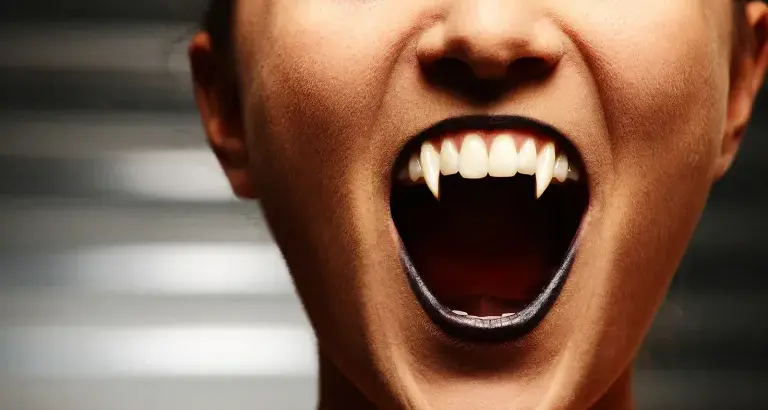Scientists reconstructed the face of a “vampire woman”
- March 22, 2024
- 0
A woman nicknamed the “vampire” in 16th-century Italy has been given new “life” with modern facial imaging techniques. Remains found in a mass grave of plague victims with
A woman nicknamed the “vampire” in 16th-century Italy has been given new “life” with modern facial imaging techniques. Remains found in a mass grave of plague victims with

A woman nicknamed the “vampire” in 16th-century Italy has been given new “life” with modern facial imaging techniques. Remains found in a mass grave of plague victims with a fire brick in his mouth indicate that ancient communities may have viewed him as a source of disease due to his alleged ability to drink blood. This practice is believed to be an attempt to remove his ability to harm others after his death.
Its remains were first unearthed in 2006 on the island of Lazzaretto Nuovo, which once served as a plague refuge and became a cemetery during the 1576 epidemic. This period, even a century before the publication of Bram Stoker’s Dracula, was gripped by vampire hysteria as the hunt for those responsible for the spread of deadly diseases took place.
This hysteria was fueled by rotting remains that often appeared to “drink” blood and altered tissues that could suggest ideas of vampirism. A 2010 study suggested that the brick in the woman’s mouth may have been placed deliberately to prevent her from “spreading” the plague.

With the help of 3D modelling, the woman’s personality was recreated. Cicero Moraes, an expert in criminal facial reconstruction, used skull measurements to create an accurate model enhanced with digital techniques to achieve realism.
Examination of the woman’s bones showed that she was over 60 years old and had a simple diet rich in vegetables and grains; This may indicate his low social status. This detail adds another dimension to understanding why he is considered a vampire. It also highlights how social conditions and beliefs can influence people’s views about disease and its causes.
However, further research indicates that the presence of a brick in the mouth may be coincidental or occur as a result of a number of conditions not directly related to beliefs about vampireism. This calls into question the direct attribution of such practices to the traditions or beliefs of a particular period and points to the complexity of the historical context and the limits of our understanding of the past.

Cicero Moraes’ facial reconstruction not only reveals to the world the face of a woman forgotten for centuries, but also demonstrates the power of modern technology in historical research. Using 3D modeling and computed tomography, Moraes managed not only to recreate the woman’s physiognomy, but also to participate in resolving questions regarding the circumstances of her burial.
Although facial reconstruction and examination of the burial context do not provide comprehensive answers to all questions, they do shed light on the complex beliefs and rituals of past communities. They also show how our interpretations of historical events and practices may change as new data and technologies emerge. Source
Source: Port Altele
As an experienced journalist and author, Mary has been reporting on the latest news and trends for over 5 years. With a passion for uncovering the stories behind the headlines, Mary has earned a reputation as a trusted voice in the world of journalism. Her writing style is insightful, engaging and thought-provoking, as she takes a deep dive into the most pressing issues of our time.